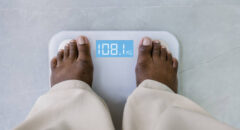
Thanks to new medications and surgical techniques, people are living longer. However, a 35-year-old body will be a very different body than a 75-year-old one. Many issues, both genetic and environmental, affect how we age.
The most widespread condition affecting those 65 and older is coronary heart disease, followed by stroke, cancer, pneumonia and the flu. Accidents, especially falls that result in hip fractures, are also unfortunately common in the elderly.
A lot of our elders are coping with at least one of the following conditions, and many are dealing with two or more of the following:
1. Heart conditions
Hypertension, vascular disease, congestive heart failure, high blood pressure and coronary artery disease are all risk factors for many adults as they age.
Heart disease affects 37 percent of men and 26 percent of women 65 and older, according to the Federal Interagency Forum on Aging-Related Statistics.
What you can do
“Exercise, eat well, get a good night’s rest. Eating well means eating in a fashion that will allow you to keep a healthy weight with a well-balanced and healthy diet,” says geriatrician Marie Bernard, MD, deputy director of the National Institute on Aging in Bethesda, Maryland.
RELATED: Is Your Parent Showing Signs Of Alzheimer’s? How To Tell…
2. Dementia, including Alzheimer’s disease
The Alzheimer’s Association reports that one in nine people age 65 and older, which is about 11 percent, have Alzheimer’s disease.
Alzheimer’s can have a significant impact on the safety of seniors, including issues of safety and self-care and the cost burden of care.
3. Depression
According to the American Psychological Association, 15 to 20 percent of Americans over 65 have experienced depression, which can lead to lower immunity and make it harder for seniors to fight off infections.
What you can do
Medication and therapy are great ways to combat depression. Increasing your physical activity may also help.
Seniors report spending just eight to 11 percent of their free time with family and friends, according to the Federal Interagency Forum on Aging-Related Statistics. So spending time with loved ones may help you combat the depression and isolation you may be feeling.
4. Incontinence (urine and stool)
According to research, one in three older women and one in 12 older men have lower urinary tract symptoms that can include incontinence causing urgent needs to use the toilet, frequent bathroom trips, or losing tiny amounts of urine with certain activities.
What you can do
Physical exercise, a Mediterranean diet, blood pressure management, and maintaining a healthy weight can all reduce the risk of incontinence. An added bonus? They also reduce your risk of obesity, stroke, diabetes, and reduced mobility, all of which increase the risk for urinary incontinence.
5. Arthritis
“Arthritis is probably the number one condition that people 65 or older contend with,” says Dr. Bernard. In fact, the CDC estimates that it affects 49.7 percent of all adults over 65. This can lead to pain and lower quality of life for many seniors.
What you can do
You may feel discouraged to be active if you are living with arthritis. However, along with other treatments, exercise can provide great relief. Talk with your doctor to develop a personalized activity plan that perfectly fits your lifestyle.
RELATED: People Who Follow These 8 Heart Health Metrics May Live Years Longer
6. Osteoporosis
“Osteoporosis can contribute to becoming less mobile and potentially disabled should you fall and have a fracture or as the vertebral bodies collapse,” Bernard shares. According to National Osteoporosis Foundation estimates that 54 million Americans over age 50 are affected by low bone mass or osteoporosis.
These people are at greater risk of a fracture or break, which could lead to poor senior health and reduced quality of life.
7. Diabetes
Diabetes is a serious health risk for many seniors. The CDC estimates that 25 percent of people ages 65 and older are living with diabetes.
What you can do
Talk to your doctor about getting a blood test for your blood sugar levels. The earlier you know your risk of developing diabetes, the sooner you can make changes to improve your outlook. These changes include physical activity and eating healthily.
8. Breathing problems
Chronic lower respiratory diseases, such as chronic obstructive pulmonary disease (COPD), are the third most common cause of death among people 65 and older, according to the CDC.
Asthma, another respiratory disease, is also common among people 65 and older. About 10 percent of men and 13 percent of women are living with asthma, and 10 percent of men and 11 percent of women are living with chronic bronchitis or emphysema, according to the Federal Interagency Forum on Aging-Related Statistics.
What you can do
Chronic respiratory disease makes seniors more vulnerable to pneumonia and other infections. However, there are steps you can take to protect yourself. Getting lung function tests and taking the correct medication, or using oxygen as instructed, will help improve your quality of life.
9. Frequent falls, which can lead to fractures
It is no surprise that the risk of falls increases with age. These falls often require emergency room care. Each year, 2.5 million people ages 65 and older are treated in emergency departments because of falls, according to the CDC.
What you can do
Most falls occur at home. So it is wise to remove any tripping hazards around your home. These include area rugs and slippery bathroom floors.
RELATED: Avoid The 7 Most Common Factors in Premature Aging
10. Parkinson’s disease
Although it can occur in people younger, Parkinson’s disease often affects people over the age of 60.
11. Cancer
The CDC reports that 28 percent of men and 21 percent of women over age 65 are living with cancer.
What you can do
When caught early through screenings, such as mammograms, colonoscopies, and skin checks, many types of cancer are treatable. Cancer isn’t 100 percent preventable, however, by improving your quality of life and working with your medical team to maintain a healthy lifestyle, you can lower your odds of developing cancer and/or improve your odds of survivorship if you do develop cancer.
12. Eye problems (cataracts, glaucoma, Macular Degeneration)
Common age-related eye problems include presbyopia, glaucoma, dry eyes, age-related macular degeneration, cataracts and temporal arteritis.
What you can do
Make sure to keep up with regular eye doctor appointments, especially if you have diabetes.
Other things to be aware of
As the body changes, other things to be aware of are:
- A slowed reaction time, which is especially important when judging if a person can drive.
- Thinner skin, which can lead to breakdowns and wounds that don’t heal quickly
- A weakened immune system, which can make fighting off viruses, bacteria and diseases difficult
- A diminished sense of taste or smell, especially for smokers, which can lead to diminished appetite and dehydration
The list can seem daunting. However, with proper care, aging adults can have a life filled with joy.








